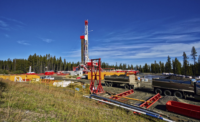As federal safety officials responded Friday to a death on a Gulf of Mexico oil rig, the agency in charge of oil-rig safety received a rebuke from a congressional watchdog office that found poor management has caused it to fail in its most basic functions.
A worker was fatally injured while working on the rig, operated by Houston-based Whistler Energy II, about 150 miles south of New Orleans, according to the Bureau of Safety and Environmental Enforcement. All drilling operations there have been suspended while an investigation into death begins.
But the bureau has undermined its own development with constant restructuring, according to a U.S. Government Accountability Office report released in March. President Obama created the Bureau of Safety and Environmental Enforcement in 2011 to better oversee offshore oil and gas operations and end a cozy relationship between government regulators and industry in wake of the Deepwater Horizon explosion and subsequent oil spill in the Gulf.
The safety bureau “has been operating since its inception without actually prescribed procedures, policies and guidelines and without even recording the results in a coherent way of its activities,” said Frank Rusco, director of the Government Accountability Office's Natural Resources and Environment division.
His strongest words were reserved for the bureau's failure to staff its Environmental Enforcement Division, which has been downgraded to a local branch in spite of millions of dollars in special financing to build it up as a program that should serve drilling operations nationwide.
“This environmental group that had been set up and was doing that was understaffed,” Rusco said. “Congress … recognized that and provided money specifically earmarked to hire staff to fill those positions. But, to date, those positions have not been filled. The BSEE management did not have a good explanation for why they haven’t filled those positions. In fact, they seem to have no explanation whatsoever.”
The fatality rate among oil and gas extraction workers — about 25.1 deaths per 100,000 workers per year — is about seven times higher than among U.S. workers in general, according to the federal Centers for Disease Control and Prevention, citing data from 2003 to 2013.
Source: USA Today



